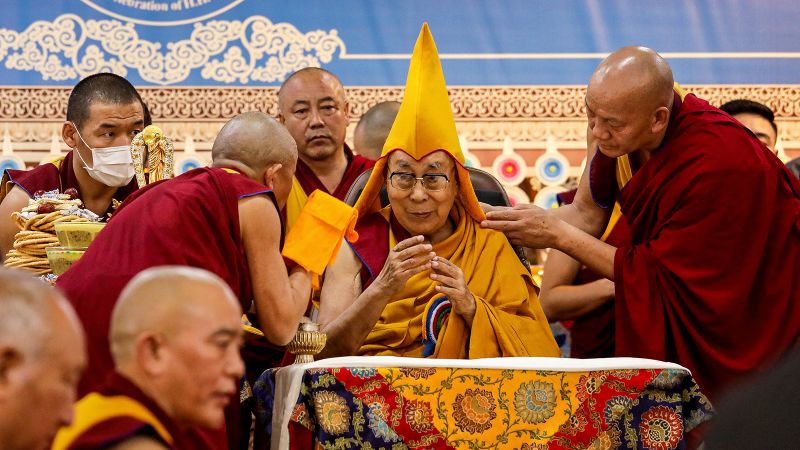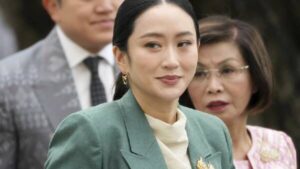
The Dalai Lama has reaffirmed the continuation of his spiritual lineage, announcing that he will have a successor after his death. This decision perpetuates a centuries-old tradition that remains a contentious issue in the ongoing conflict with China’s Communist Party over Tibet’s future. The announcement was made on Wednesday through a video message addressed to religious elders gathered in Dharamsala, India, where the Dalai Lama has resided since fleeing Tibet following a failed uprising against Chinese rule in 1959.
“I am affirming that the institution of the Dalai Lama will continue,” stated the Dalai Lama in the pre-recorded message, highlighting the numerous requests from Tibetans and Tibetan Buddhists urging him to ensure the continuity of his spiritual role. He emphasized that the Gaden Phodrang Trust holds the exclusive authority to recognize his future reincarnation, insisting that no external entity has the right to interfere. He further noted that the process of selecting the next Dalai Lama should adhere to traditional practices.
Historical Context and Current Implications
The Dalai Lama’s declaration comes at a critical juncture, just days before his 90th birthday. This decision sets the stage for a potentially high-stakes conflict over his succession between Tibetan leaders in exile and the Chinese government. The Chinese Communist Party maintains that it alone has the authority to approve the next Dalai Lama, a claim that has been consistently rejected by the Tibetan spiritual leader.
In a memoir published earlier this year, the Dalai Lama asserted that his successor would be born in the “free world” outside of China, urging his followers to reject any candidate selected by Beijing. This could potentially lead to the emergence of two rival Dalai Lamas: one chosen by the Tibetan spiritual community and another endorsed by the Chinese government.
The Dalai Lama’s Influence and China’s Position
The Dalai Lama has long been a symbol of Tibetan identity and resistance against Chinese control. His influence extends beyond religious spheres, impacting political and cultural dimensions of Tibetan life. The Chinese government, however, views the Dalai Lama as a separatist threat, despite his consistent advocacy for non-violence and autonomy rather than outright independence for Tibet.
According to experts, the Chinese government’s insistence on controlling the selection of the next Dalai Lama is part of a broader strategy to consolidate power over Tibet. “China’s interest in the succession of the Dalai Lama is not just about religious authority; it’s about political control and legitimacy,” said Dr. Lobsang Sangay, former Sikyong (President) of the Tibetan Government-in-Exile.
Looking Ahead: The Future of Tibetan Buddhism
The Dalai Lama’s announcement underscores the complex intersection of religion and politics in the Tibetan struggle. The potential for two competing Dalai Lamas raises questions about the future of Tibetan Buddhism and its leadership. As the Dalai Lama approaches his 90th year, the Tibetan community and international observers alike are keenly aware of the implications of his succession.
The next steps will likely involve consultations with high lamas and the Tibetan public to determine the appropriate course of action. The Dalai Lama has previously mentioned that he would revisit the question of his succession when he reaches 90, suggesting that further announcements may be forthcoming.
As the world watches, the Dalai Lama’s decision reaffirms his commitment to ensuring the continuity of Tibetan Buddhism, even as it challenges China’s claims to religious authority in the region. The outcome of this succession process will not only shape the future of Tibetan Buddhism but also influence the broader geopolitical landscape in Asia.






